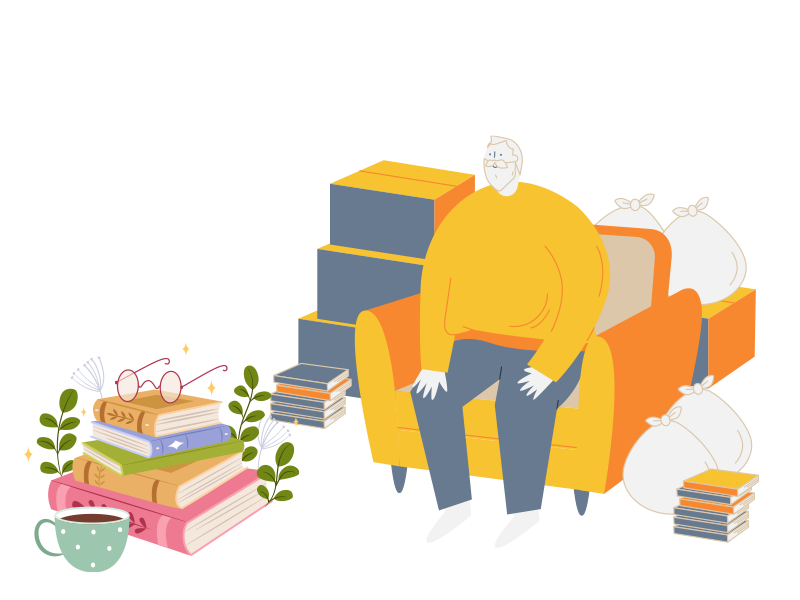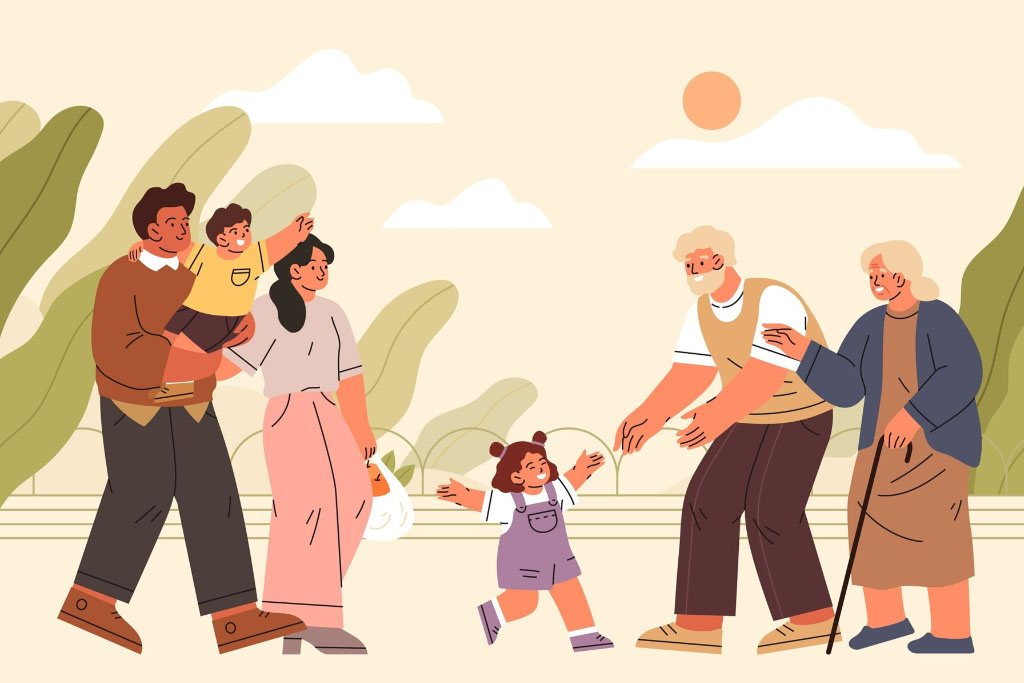Everything You Need To Know About Hoarding Disorder
Have you heard of hoarding disorder? Maybe you know it under another name or have a general idea that it’s not psychologically healthy to amass huge amounts of personal belongings for no apparent reason. Many of us have known someone in the past who likely had a hoarding problem. Perhaps they packed several rooms of their home with worthless or nearly worthless stuff. Or maybe they were unable to walk safely through their homes due to the giant piles of trash and debris that they refuse to get rid of.

It’s important to know the actual medical definition of the disorder, understand its common symptoms, learn about the five stages of hoarding, and, most importantly, know how and where to get help. All these things are essential whether you suspect that a loved one or friend might have the disorder, or if you thing you have a problem with hoarding.
Here is a summary from Clutter Trucker of what everyone should know about hoarding:
What is Hoarding Disorder?
The disorder is defined as a “recurrent or persistent problem that causes someone to be unable to part with or discard possessions due to an unreasonable desire or need to keep them.” People who suffer with this disorder often become worried or severely distressed even at the idea of throwing something away or getting rid of items they own. The result is nearly always a massive accumulation of various things, most of which have no monetary value.
Many people who hoard end up living in conditions that are horrid and which include cramped areas and rooms that are uninhabitable. Clutter is everywhere, even on sinks, in stoves, in closets, in unused bathrooms, basements, attics, and elsewhere. When a hoarder runs out of indoor storage space, they typically start piling stuff up outside their residence.
Like most other psychological disorders, hoarding have several stages that range from not-so-bad to very severe. For many sufferers and their relatives, the problem can lead to major life issues, hygiene problems, interpersonal confrontations, and even divorce.
Most sufferers are blind to their own hoarding condition. This is what often makes treatment nest to impossible. The good news is that aggressive treatment methods can work in even the most extreme cases so that hoarders can end up living healthier, happier, safer lives.
Common Symptoms of Hoarding Disorder
In order to understand hoarding, it’s important to know the common signs and symptoms. In most cases the early warning signs include behaviors like the keeping of huge numbers of things, slowly building up extreme clutter in the residence, and an obvious inability to get rid of or throw away anything. For many sufferers, these signs show up in the early years of life, often affecting teens and young adults.
Later on, those with the condition begin to acquire items that have no apparent or monetary value, things they clearly don’t need, and for which they have no storage space. Often, middle-age is the time of life when the condition becomes severe, and when people resist treatment or help of any kind for this very heartbreaking problem.
One reason hoarding is so hard to notice is that it’s often a “private” practice, meaning that hoarders pack their junk away in hidden nooks and crannies. Later, when they run out of storage space, the problem becomes more apparent to others. However, by then the hoarding condition is well advanced and much harder to treat.
Here’s a brief list of the most common symptoms and signs of the hoarding illness:
- Obtaining things that are not needed and for which there is no storage space
- A serious problem with throwing anything away, selling items, or giving items away
- Having a deep-seated need to keep things, against common sense
- Getting upset or worried at the mere thought of losing any of the hoarded items
- Living space becoming non-usable due to a high amount of clutter
- Personality traits like procrastination, being indecisive, having trouble making plans, having difficulty organizing belongings, perfectionist tendencies
Learn the Five Stages of Hoarding

Many psychological disorders occur in stages and hoarding is no different. In fact, there are five identifiable stages of the syndrome:
- Stage One: No odors or hygiene problems that are obvious. Least severe stage. Most windows, staircases, and doors are fully accessible. The house or apartment has no more than two or three places where there is animal waste. There might be no clutter at all in this stage. Most people in stage one, however, do have an issue with getting rid of, selling, or giving away any of their belongings. Most signs in this stage are behavioral and not obvious to the casual observer.
- Stage Two: Usually at least one impeded exit in the home. Poorly functioning, or completely non-functioning HVAC system or appliances. There can be a visible amount of clutter all over the home, perhaps in as many as two or three rooms. Hallways might appear blocked. Kitchens and bathrooms might show mold or mildew to the naked eye. Pet waste or odor. Food prep surfaces that are unclean. Waste baskets that are full or overflowing. Possible existence of rodents, feces in cat litter boxes, pet waste elsewhere, and mild to strong animal odors.
- Stage Three: Broken appliances, structural damage to the home, clutter exists outside as well as indoors, neglected animal litter boxes and cages, rodents may be apparent, congested halls, evidence of fleas and other bugs, lots of dust, blocked vents, spills on floors and rugs, a non-functioning bathroom, dirty clothing in several places, various odors.
- Stage Four: Mildew and mold in many places, sewage problems, structural damage to the residence, animal waste evident, too many pets, rotting food visible, bedrooms are nearly non-functional, old food in cupboards, spiders, flammable items stored in unsafe areas, rodents, blocked exit or exits, bare beds, lice, unclean dishes. People at this level often avoid bathing for long periods of time and have sub-standard personal hygiene. Mental health status is often waning with an unrealistic view of “big plans” or long-ago memories.
- Stage Five: Broken walls, blocked hallways, structural damage to home, fire hazards evident, lack of running water or electricity, rodents, kitchens and bedrooms packed with clutter, human feces evident, too many pets, broken refrigerator, rotted or rotting food visible, possible existence of deceased pets or non-pet creatures. People at this advanced stage of hoarding often reside with friends or relatives due to the conditions in their own residence and very often suffer from symptoms of advanced-stage depression.
The Importance of Getting Professional Help

The disorder based on hoarding behavior is a serious psychological condition for which sufferers should get help. Rarely do they seek help for themselves. Loved ones or friends often help hoarders connect with professional counselors. Our company is one such organization that works hard to see that anyone who has to live with this condition gets the best help available.
The good news is that there are many social service agencies that can do an effective job of getting people through their difficult situations and give them a new, fresh reason for being optimistic about the future. That’s why our company often works with hoarders and their families to connect them with professional resources, agencies, and counselors who can help alleviate the condition.
If you know someone who possibly has a problem with hoarding, or who just appears to have a problem with it, speak with a mental health worker or physician as quickly as possible. Keep in mind that, as with most psychological disorders, it’s vitally important to get help in the early stages rather than later. Treating a hoarder who is young and in stage one or two can be a quick and painless affair. For people in stages three, four, and five, treatment and counseling can take several years. Many city, county, state, and federal government programs are available for free or at very low fees, so don’t hesitate to search for help if you know someone who needs assistance.
Putting It All Together
What’s true for hoarding is true for many different types of psychological problems: we all should educate ourselves about it, learn to spot problems in ourselves or others, and know how to get help if things appear out of control. Be careful not to assume that all collectors suffer from the disorder. Many millions of people collect coins, stamps, sports memorabilia, and endless objects that interest them.
There’s no point in worrying about someone who keeps, for example, several boxes of baseball cards in the attic and regularly sells them at conventions. That’s not a good example of hoarding. But if someone has dozens of boxes of various non-valuable, random items stashed in their house and refuses to ever get rid of anything, then you might be witnessing a case of hoarding.
The main thing everyone should strive to do is be able to identify a legitimate case of hoarding that has reached the level of being a disorder. Understand the definition of the problem, become familiar with the five stages, make a note of the common symptoms, and be honest with yourself and your loved ones if it appears that you or one of them might have a problem with hoarding.
Finally, know how to get help and where to go if the situation is chronic. If you or someone you know is an “early stage” hoarder, it helps to discuss the situation and seek help. If you’re dealing with a later stage hoarding problem, consider getting assistance from a local social service agency that can offer emergency help.
Being aware and staying informed is always a good thing. When it comes to hoarding, you might be able to save someone a lot of agony and suffering if you keep your eyes opened and know how to spot a problem before it gets out of control.

About Jennifer Hanzlick
Clutter Trucker is a Denver-based hoarding clean-out company founded by Jennifer Hanzlick. Jennifer leveraged 15 years of corporate experience in to start the company in 2008. Her mission is to help and educate individuals and their loved ones who have hoarding disorder. A featured speaker at Ted X Boulder, Jennifer works directly with community and non-profit organizations to boost public awareness about the condition. To that end, she founded the Colorado Hoarding Task Force in 2015.
 720-982-7856
720-982-7856



